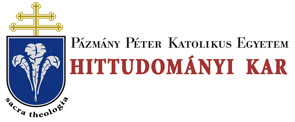Folia Canonica 10. (2007)
PROCEEDINGS OF THE INTERNATIONAL CONFERENCE - Szabolcs Anzelm Szuromi: Development of the Clerical Duties and Rights Based on the 11th-12th Centuries. Canonical Collections
DEVELOPMENT OF THE CLERICAL DUTIES AND RIGHTS 209 tions, in St. Ivo works and also in the Decretum Gratiani. The perfection of Holy Orders as a sacrament finds its fulfilment in the episcopal degree.* 12 The clerical degrees became more specified in the course of the theological and institutional development of the Early Middle Ages13, and reached full clarification in the 11th century, which has improved well by the precise research of Jean GAUDEMET14 and Roger E. REYNOLDS.15 If we observe the canonical collections which were used in the Latin Church, we can make a sketch of the historical line of the ecclesiastical discipline regarding clerics. The enlarged Collectio Dionysiana’s text was sent to Charlemagne in 774 by Pope Hadrian I, as a basic and official ecclesiastical collection for the whole Frankish Empire.16 However, the Collectio Dionysio-Hadriana was not promulgated by the pope, but in fact it became a unique basis of the councils, which were hold in the Frankish territory.17 Moreover, this collection, even its est, gregem Dominiprouidentes non coacto, sed spontanee secundum Deum, neque surpilucri gratia, sed uoluntarie; neque ut dominantes in cleris, sed forma facti gregi et ex animo, ut, cum apparuerit princeps pastorum, percipiatis inmarcescibilem gloriae coronam. Pessimae consuetudinis est in quibusdam ecclesiis tacere presbyteros, et praesentibus episcopis non loqui quasi aut inuideant autnon dignentur audire. Et si alii, inquit Paulus apostolus, fuerit reue- latumsedenti, prior taceat. Potestis enim per singulos prophetare ut omnes discant et omnes consolentur. Et spiritus prophetarum prophetis subiectus est; non enim est dissensionis Deus, sed pacis. Gloria patris est filius sapiens: gaudeat episcopus iudicio suo cum tales Christo elegerit sacerdotes. (...) San Jeronimo: Epistolaria /(Biblioteca de autores cristianos 530), Madrid 1993.473^175. i2Capitans, O., Episcopato adecclesiologia nell’età gregoriana, in Le istituzioni eccle- siastiche della societas Christiana dei secoli X-XII: papato, cardinalato ed episcopato (Atti della V Settimana Intemazionale di Studi medioevali, Mendola 26-31 agosto 1971, Miscellanea dei Centro di Studi Medioevali VII); Milano 1974. 316-373. 13 Cf. Imbert, J.,Z,e.s' temps Carolingiens (741-891). L'Église: Les institutions (Histoire du Droit et des Institutions de l’Église en Occident V/T), Paris 1994. 91-124. 14 GAUDEMET, J., Église et cité. Histoire du droit canonique, Paris 1994,478-493. GAUDEMET, J., Propos de l'épiscopat medievale (XIIe - XIIP siècles), in Studia Gratiana XXVII (1996) [De lure Canonico Medii Aevii. Festschrift fur Rudolf Weigand] 149-172. 15 REYNOLDS, R.E., The De officiis VIIgraduum: Its Origin and Early Medieval Development, in Mediaeval Studies 34 (1972) 113-151. Reynolds, R.E., The 'Isidorian 'Epistula ad Leudefredum: An Early Medieval Epitome of the Clerical Duties, in Mediaeval Studies 49 (1972)252-330. REYNOLDS, R.E., Patristic 'presbiterianism' in the Early Medieval Theology of Sacred Orders, in Mediaeval Studies 45 (1983) 311-342. 16 Cf. Mordek, H., Kirchenrecht und Reform im Frankenreich. Die "Collectio Vetus Gallica", die älteste systematische Kanonessamlung des fränkischen Gallien. Studien und Edition (Beiträge zur Geschichte und Quellen des Mittelalters 1), Berlin-New York 1975. 241-249. I7Szuromi, Sz.A., A püspökökre vonatkozó egyházfegyelmi szabályok a Dionysio-Hadriana Gyűjteményben, in Kánonjog 2 (2000) 87—95, especially 87. Gaudemet, J., Les sources du droit de l’Église en Occident du IF au VIF siècle, Paris 1985. 134-137.
